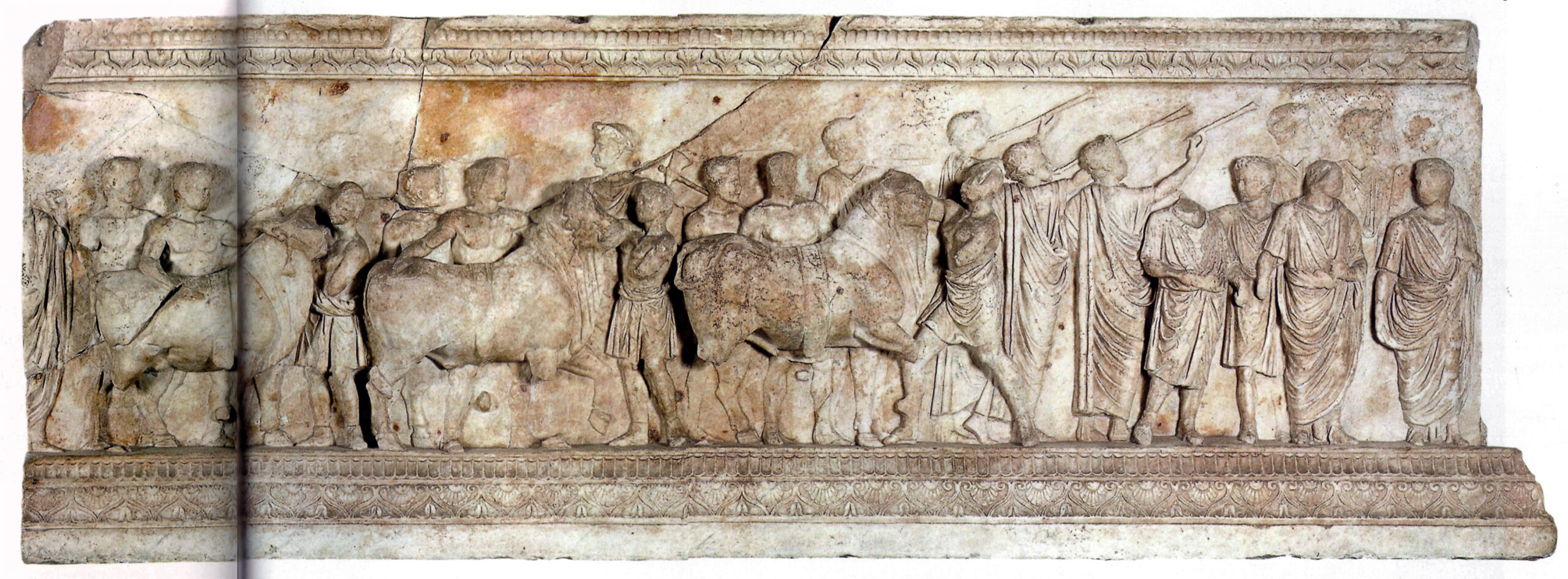Queen Apollonis of Pergamon’s pompe
| TITLE: |
| Queen Apollonis of Pergamon’s pompe |
| DATE: |
| c. 166-159 BC |
| TEXT: |
| OGIS 309: Orientis Graeci inscriptiones selectae (OGIS) 2 vols. Leipzig, 1903-1905. Reprint Olms, Hildesheim, 1986 OGIS 309 |
| EDITIONS/TRANSLATIONS: |
| OGIS 309 |
| KEYWORDS: |
| Word used to mean procession: |
| πομπή (l. 9 [πομπ]εῦσαι? / [χορ]εῦσαι, vb. χορεύω) |
| Words used to mean the cult images: |
| Altar (l. 14, [βωμὸν] θεᾶς Ἀπολλωνίδος Εὐσεβοῦς Ἀποβατηρίας) |
| Gods or other entities named: |
| Dionysus (l. 1, ἐν τῶι Διο[νυσίωι]) Goddess Apollonis (l. 13 and 14) Stratonice (l. 6, Στρατονίκη; died about 135 BC, princess of Cappadocia and through marriage a queen of Pergamon). |
| Description of the cult images: |
| Procession’s route: |
| From the temple of Dionysus = Dionysion? (l. 1 ἐν τῶι Διο[νυσίωι) |
| Frequency with which the procession takes place: |
| Every year |
| Performers: |
| Sacred and the public magistrates both those in the city and those in the countryside (l. 1 τὰς συναρχίας … l. 3, τ̣ὰ̣ς̣ ἐν τῆι πόλει καὶ τῆι χώραι) The priest of Aphrodite and the goddess Apollonis Eusebes, and the priestess of Apollonis and queen Stratonike along with the president and the hieropoioi and the other magistrates (l. 4-6, τὸν ἱερέα τ̣[ῆς] [Ἀφρο]δίτης καὶ θεᾶς Ἀπολλωνίδος Εὐσεβοῦς καὶ τὴν ἱέρειαν αὐτῆς κα[ὶ] [βα]σιλίσσης Στρατονίκης καὶ τὸν πρύτανιν καὶ τοὺς ἱεροποιοὺς) |
| References to the public attending the procession: |
| Rites related to the procession: |
Prayers, libations, and sacrifices, after that the free-born boys sing an altar hymn; and the maidens chosen by the supervisor of education shall perform a dance and sing a hymn (l. 7-10, καὶ μετὰ τὸ συντελεσθῆναι τὰς κατευχὰς καὶ τὰς [σ]π̣ονδὰς καὶ τὰς θυσίας, ἆισαι τοὺς ἐλευθέρους παῖδας παραβώμιον, [χορ]εῦσαι δὲ καὶ τὰς παρθένους τὰς ἐπιλεγείσας ὑπὸ τοῦ παιδονόμου [καὶ] ἆισαι ὕμνον) The timouchoi and generals in office each year shall see to it (l. 12-13, τοὺς τιμούχους καὶ τοὺς σ[τρα][τ]η[γο]ὺς); sacrifice on the Apollonis’ altar in the agora (l. 15, [θ]υσ[ίαν —]) |
| Allusions to conduct or forms of reverence: |
| Other remarkable elements: |
It is a decree instituting religious ceremonies in honor of Queen Apollonis of Pergamon (Attalus I of Pergamon’s wife) in the city of Teos. She was the mother of Eumenes II and Attalus II; although the royal family of the Attalids often received god-like honours in the cities of their kingdom, they were not given the title ‘god’ or ‘goddess’ until after their death; therefore this cult of Apollonis at Teos must have started after her death. A truce (l. 3, ἐχεχειρίας) was held between everyone on this day |
| BIBLIOGRAPHY: |
BÖMMER (1952): RE, s.v. Pompa. Herrscher, Vol. XXI.2, p. 1965, n.273 PANAGIOTIS, I. P. (2012): “Apollonis, wife of Attalos I”. In: The Encyclopedia of Ancient History, edited by R.S. Bagnall, K. Brodersen, C.B. Champion, A. Erskine and S.R. Huebner (eds.), Wiley-Blackwell, Hoboken MASSA-PAIRAULT, F-H. (1981–82): “Il problema degli stilopinakia del templo di Apollonis a Cizico. Alcune considerazioni”, Annali della Facoltà di Lettere e Filosofia di Perugia 19, pp. 147–219 MIRÓN, D. (2018): “From Family to Politics: Queen Apollonis as Agent of Dynastic/Political Loyalty.” In: Royal Women and Dynastic Loyalty: Queenship and Power, edited by Dunn Caroline and Carney Elizabeth, Palgrave Macmillan, London, pp. 31-48 VAN LOOY, H. and K. DEMOEN (1986): “Le temple en l’honneur de la reine Apollonis à Cyzique et l’énigme des stylopinakia”, Epigraphica Anatolica 8, pp. 133-142 VAN LOOY, H. (1976): “Apollonis Reine De Pergame”, Ancient Society 7, pp. 151-65 |
